Dragonfly was born in Florida in the early 1990s. Back-of-the-napkin sketches started in the 1980s following the dynamic 1970s when hang gliding swooped into national awareness. What one designer did with Dragonfly would become one of the most celebrated developments in hang gliding.
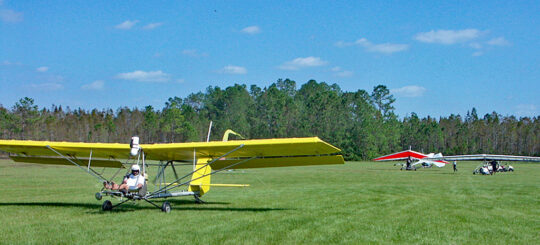
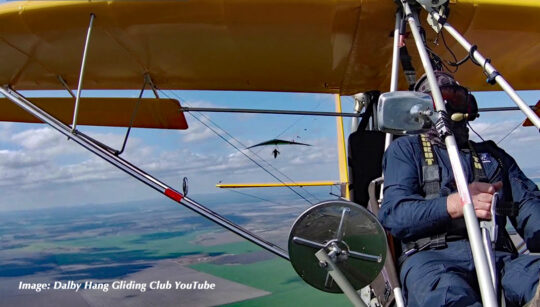
Enter Dragonfly
by Bobby Bailey
Bobby Bailey was one of the hang gliding faithful in a large central Florida flying community. These gung-ho young guys in excellent physical condition used no-run starts to leap off the beach towed on a long line by a powerful ski boat. They had fun and it got them in the air, but extended duration flights were simple luck because boat towing generally didn’t lift the glider high enough for those early wings to effectively work the lift.
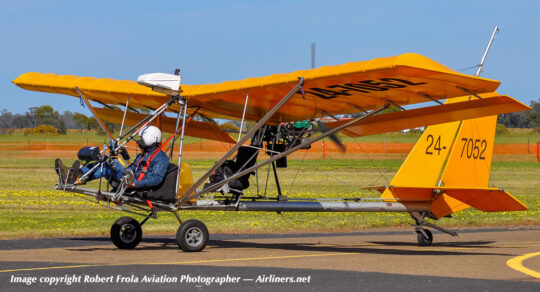
Now well-evolved, Dragonfly flies all over the world. More than 150 have been delivered, an impressive achievement for a purpose-built aircraft.
Bobby observed the parallel development of Part 103 ultralight vehicles, growing from low-powered single seaters to more powerful two seaters. He saw that with enough thrust, he might tow a hang glider into the air much like a Piper Pawnee tows a sailplane aloft. Hang gliding pioneers like Bill Moyes tried towing behind conventional aircraft but it was scarily too fast. He barely managed to keep control of the glider flying near its never-exceed speed.
Bobby knew the challenge was not to speed up the hang gliders but to slow the tow plane. He adapted a modified King Cobra* (a Quicksilver-like design of that day) with large ailerons and made other changes. It flew slowly but not enough. He realized it needed to be a clean-sheet design, made purpose-built to tow hang gliders.
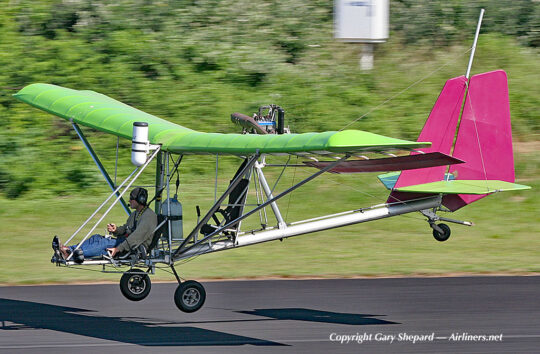
Note the tail structure (tube rising vertically) built to allow a V-line bridle for towing hang gliders. This method greatly lessens the impact of the glider on the tug aircraft, a significant safely improvement along with weak links on each of the tether line.
Towing from a point under the tailplane like a Pawnee does is not optimal either. The hang glider is weight-shift controlled and needs more control flexibility than a single tow point allowed. Notice the tube extending from the rudder stabilizer. A V-line from that high point to a low point lets the hang glider rise or descend with minimal impact on the towplane. All this needs to happen at 30-35 miles per hour, even with two persons on board the towed aircraft. A Pawnee stalls at 62 miles per hour even with full flaps. That’s way too fast for any hang glider. Dragonfly would eventually fill the need perfectly.
Within a couple years (about 1991, I believe) Wallaby Ranch hang gliding air park operator Malcolm Jones invited me out to a open field where I watched Bobby fly an early Dragonfly.
Right then, I knew the hang gliding game had changed forever.
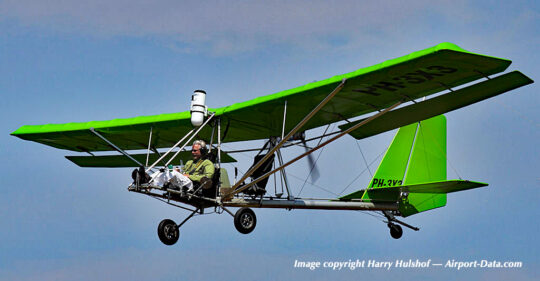
Back Home In Florida
New Bailey Moyes Dragonfly owner Randy Dorsey purchased the business from Ed Pitman‘s estate after he passed away (unrelated to the aircraft). Ed had broadened Dragonfly’s appeal by getting approval as “farm equipment” (article link below). Over the years deliveries climbed beyond 150 aircraft, an impressive achievement thanks to Ed’s efforts. From California Randy and helpers brought inventory and tooling in a school bus to set up shop at Marion County Airport, X35, in Dunnellon, Florida.
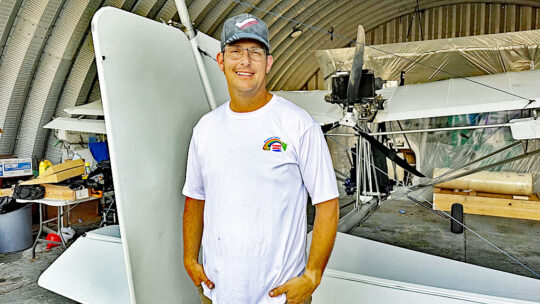
Learn more about plans for Dragonfly back home in Florida in the video below. You can also read several articles below from my earlier reporting.
ARTICLES ON DRAGONFLY:
Listed oldest to newest
- Dragonfly Approved as Special LSA
- Dragonfly Earns Approval as Working Aircraft
- Dragonfly Wins SLSA Approval with Rotax 912
- Dragonfly Rancher Working Aircraft Introduced
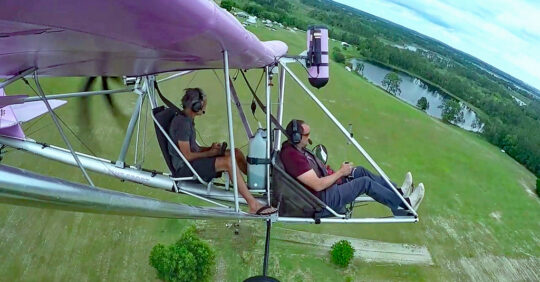
“The ELSA is a great deal, but so is the SLSA. For $30K more, you get a factory-built Special LSA, saving over 200 hours of build-time labor. SLSA buyers will have the ability to use their Dragonfly for hire as well as qualifying for a tax write-off,” said Randy. “SLSA owners also get factory support and will have priority for factory service and annuals.”
Potential buyers can shave off another ten grand by choosing a Rotax 582 Dragonfly ELSA for $59,995. An Experimental Amateur-Built version can save even more but for details on any of these choices please contact…
- BaileyMoyesDragonfly, company website, or
- Go direct to pricing guidelines
With prices of everything you buy up 50% or more in the 2020s, those costs to own a Dragonfly may be considered reasonable (though I clearly understand everybody’s budget is different). Only you can decide if one of those descriptions above is truly affordable for you.
* Earlier I reported an Advanced Aviation Hi-Nuski was the proof-of-concept aircraft. I was corrected thanks to Barb and Steve Flynn, who along with several other local pilots, were involved in the development of that first tug.
Recorded in late April 2024, this Dragonfly update has the latest information about the ongoing manufacture of this popular aircraft.
A Tribute to
Bobby Bailey
Barely a week before I visited Dunnellon to record the video above, Bobby Bailey, 71, was killed while flying a Dragonfly. No official evaluation has been released but the loss of this talented designer is tragic and will be deeply felt in the hang gliding community.
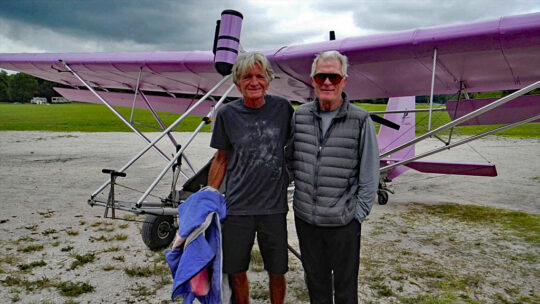
A celebration of his life is planned for Sunday, May 26th, 2024 at 6548 Groveland Airport Rd, Groveland, FL 34736 — the airport Bobby called home for decades.
Florida and southeastern U.S. pilots who knew him can gather to share personal details and tell tall stories of Bobby’s numerous flying exploits. Learn more here.
Bobby is survived by his wife Connie Bailey; his siblings, Marlene and Michael; his nieces, Ginger and Mira; his nephew Chick; and his close friend Logan Harris.
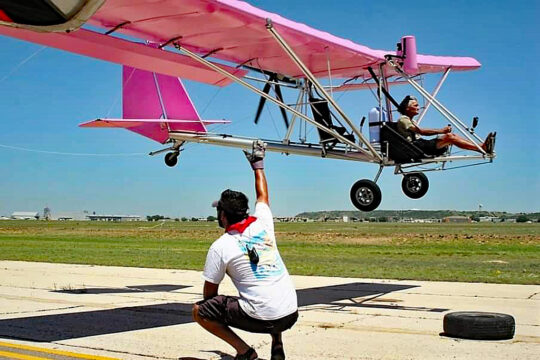
Never Forgotten
One of Bobby’s other creative designs made use of a single float intended for a larger aircraft. It ended up making a beautiful shape (at least to my eyes). My old friend Gregg Ellsworth dubbed it “The Flying Float.”
Bobby named it after his wife.



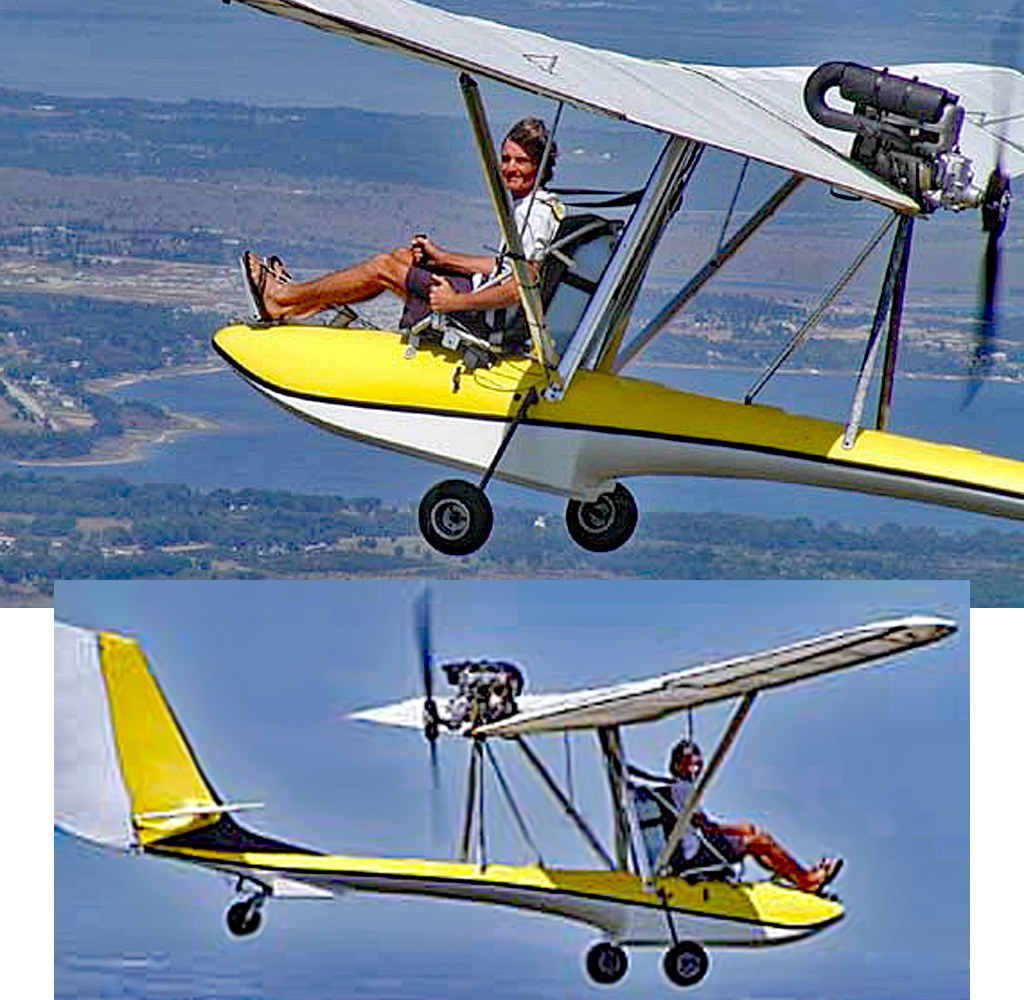
Many years ago I was a retrieve driver for Jeffo and a group of guys from Mexico that were in the Nationals hang gliding competition in Big Spring, TX. 2 short stories:
While hanging around after the safety meeting watching everyone launch, I happened to be standing next to the airport manager when one of several Dragonfly tugs came in to line up for the next tow. The pilot flew in so low that the hook up assistant casually layed down on the taxiway they were launching from while the tow plane flew over. Then he stood up and connected the tow line for the next hang glider. The airport manager shook his head and said “I can’t watch this” and went back to his office.
The 2nd story involves Bobby’s ingenuity. One of the tow pilots pranged a Dragonfly on landing and bent the keel. Bobby said “go steal me a road sign.” He wrapped the aluminum road sign around the keel as a sleave and riveted it on so they could continue using the tow plane during the competition. Bobby said he would repair it properly once they had it back in Florida.
Huge loss! Bobby Bailey was patient, kind and brilliant. He spoke succinctly, softly & generously when questioned. He also invented the most ingenious swing attached to a tree that carried one over the lake & back. I had so much fun on that swing & he explained every detail of it’s creation so I could install one on my lake. He was beloved & revered.
Thanks Bobby
So much fun you created
Thanks Dan, it’s great to see the Dragonfly continue in the USA. I’m the pilot and Dragonfly builder pictured in the yellow aircraft in your article and video. I have flown long cross country to distant hang gliding tow comps and delivering customer aircraft in Australia. I fit extra fuel cans, an in flight transfer system and store my gear in the wings when going XC. I love the Dragonfly’s.